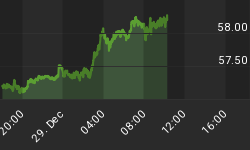3/29/2011 9:03:17 AM
The S&P-500 and NASDAQ-100 reversed right at critical resistance levels...
Recommendation:
Take no action.
My subscribers have access to the StockBarometer Market Chat room as usual. The chat room password is "mark55" without the quotes, of course. I look forward to seeing you there.
Stock Market Trends:

- ETF Positions indicated as Green are Long ETF positions and those indicated as Red are short positions.
- The State of the stock market is used to determine how you should trade. A trending market can ignore support and resistance levels and maintain its direction longer than most traders think it will.
- The BIAS is used to determine how aggressive or defensive you should be with an ETF position. If the BIAS is Bullish but the stock market is in a Trading state, you might enter a short trade to take advantage of a reversal off of resistance. The BIAS tells you to exit that ETF trade on "weaker" signals than you might otherwise trade on as the stock market is predisposed to move in the direction of BIAS.
- At Risk is generally neutral represented by "-". When it is "Bullish" or "Bearish" it warns of a potential change in the BIAS.
- The Moving Averages are noted as they are important signposts used by the Chartists community in determining the relative health of the markets.
Best ETFs to buy now (current positions):
Long DIA at $117.22 (adjusted for $0.23 dividend on 03/18/11)
Long QQQQ at $54.90 (adjusted for $0.11 dividend on 03/18/11)
Long SPY at $127.45 (adjusted for $0.55 dividend on 03/18/11)
Value Portfolio:
We hold no value positions at this time.
Daily Trading Action
The major index ETFs opened higher and moved higher for the first hour until it became apparent that the bulls lacked the ability to push the S&P-500 and the NASDAQ-100 downtrend line that has acted as resistance since the mid-February top. The next hour of trading was downward erasing the gains made since the gap up open. The NASDAQ-100 even moved slightly into negative territory and the major indexes then vacillated the rest of the session but mostly moved sideways in a fairly tight range before breaking lower in the final half hour of trading. This left all the major indexes with losses, and all equity indexes sport a BEARISH BIAS, and all of them are in trading states. The Semiconductor Index (SOX 436.75 +0.48) managed a positive close while the Russell-2000 (IWM 82.04 -0.18) realized a modest loss. The Bank Index (KBE 25.63 -0.08) logged a fractional loss while the Regional Bank Index (KRE 25.89 +0.04) tacked on a modest gain. The Finance Sector ETF (XLF 16.29 -0.05) posted a modest loss. Longer term Bonds (TLT 92.3 +0.13) managed a modest gain and maintained its BULLISH BIAS. NYSE trading volume was light with just 783M shares traded. NASDAQ share volume was also light with 1.666B shares.
There were four economic reports of interest released:
- Personal Income (Feb) rose 0.3% as expected
- Personal Spending (Feb) rose 0.7% versus an expected +0.5% rise
- PCE Prices-Core (Feb) rose 0.2% as expected
- Pending Home Sales (Feb) rose 2.1% versus an expected +0.3% rise
The first three reports were released an hour before the open. The final report was released a half hour after the open.
The U.S. dollar fell one tenth of one percent.
Implied volatility for the S&P-500 (VIX 19.44 +1.53) rose eight and a half percent and the implied volatility for the NASDAQ-100 (VXN 22.23 +1.45) rose seven percent.
The yield for the 10-year note rose one basis point to close at 3.45. The price of the near term futures contract for a barrel of crude oil fell $1.42 to close at $103.98.
Telecom (+1.4%) was the lone sector to advance. The Consumer Staples, Healthcare, and Industrial sectors were unchanged. The other six of ten economic sectors in the S&P-500 moved lower higher led by Consumer Discretionary (-1.1%) and Tech (-0.6%).
Market internals were negative with decliners leading advancers 3:2 on the NYSE and by 4:3 on the NASDAQ. Down volume led up volume 3:2 on both the NYSE and the NASDAQ. The index put/call ratio rose 0.10 to close at 1.21. The equity put/call ratio was unchanged closing at 0.57.
Commentary:
Monday's session was to be expected. We didn't specifically forecast a reversal at resistance but we were looking for choppy trade. We were not certain that the bulls couldn't continue to push the markets through the resistance area and back up to recent highs before the bears forced a reversal. Now that we have the reversal at resistance, the question is how much can the bears do with their current advantage?
We remain concerned due to the BEARISH BIAS of all equity indexes we monitor. Upward progress will be difficult until this can be worked off. It continues to look like there will be some chopping around as the market works to build energy for another move.
Longer term bonds remain with a BULLISH BIAS but are only in a trading state. None of the indexes we regularly monitor has the potent coupling of a bullish bias and an uptrend state or a bearish bias and a downtrend state. We make special note that the semiconductor index was able to log a gain in Monday's session, even as the other indexes rolled over and Tech took a sizable fractional loss. Some of the "Buy the Dip" creed seems to remain and we will monitor trading to see if it will be enough for the bulls to push the major indexes to the point where we get an excellent opportunity to change to short positions. Until then, we are being patient.
We hope you have enjoyed this edition of the McMillan portfolio. You may send comments to mark@stockbarometer.com.
















